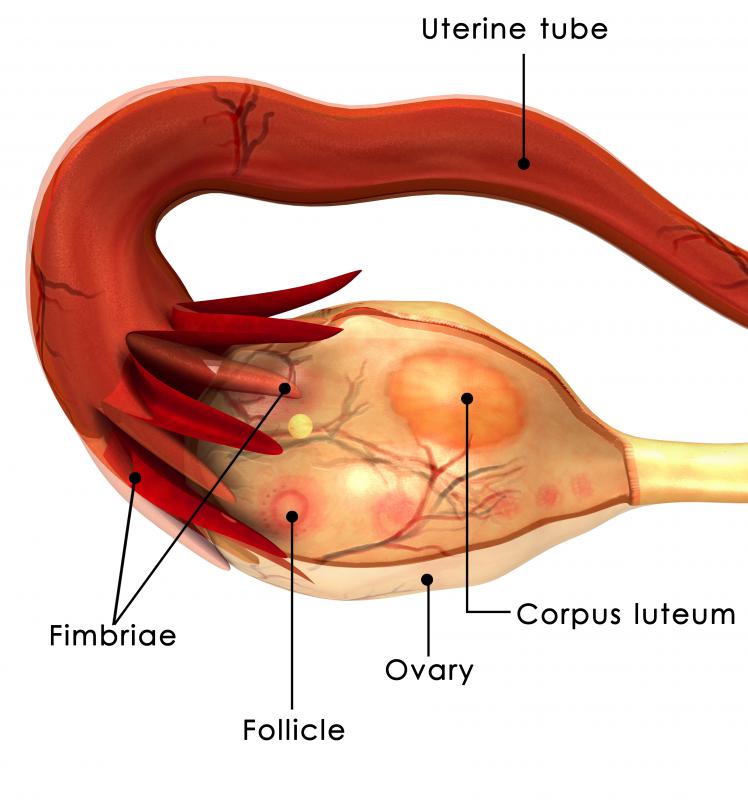At WiseGEEK, we're committed to delivering accurate, trustworthy information. Our expert-authored content is rigorously fact-checked and sourced from credible authorities. Discover how we uphold the highest standards in providing you with reliable knowledge.
What Is a Struma Ovarii?
Struma ovarii is a rare type of tumor that develops on the ovaries. It is made up of at least 50 percent thyroid tissue. This type of tumor makes up only 1 percent of ovarian tumors. They develop into either a benign strumosis or a strumal carcinoid.
A benign strumosis occurs when mature thyroid tissue develops and implants in the peritoneal cavity. A strumal carcinoid tumor is made up of carcinoid, or cancerous, tissue. The majority of cases of struma ovarii are benign strumosis. Most cases of struma ovarii are benign, and can be treated by surgical resection. Malignant cases are typically treated through surgery and radio-iodine therapy.

Symptoms of struma ovarii are the same as symptoms of other forms of ovarian tumors. They include abdominal pain, abnormal vaginal bleeding, a mass in the abdomen, and accumulation of excess fluid between the tissues lining the abdomen and abdominal organs. In rare cases, the patient may develop an overactive thyroid gland. Symptoms of an overactive thyroid include a racing pulse at night, weight loss, and nervousness. To differentiate between a typical ovarian tumor and a struma ovarii, the doctor must examine the tissue.

While struma ovarii are typically benign, they can develop malignant changes, which occur in about one-third of the cases. Of the one-third of struma ovarii that develop malignant changes, about 5 percent will eventually spread metastatically. These tumors most often develop during the reproductive years, and only rarely before puberty.
The ovaries are responsible for producing hormones, such as estrogen, used by the body, as well as releasing an egg each month during the reproductive years. In addition to tumors, the ovaries can develop cysts, which are also painful and can affect fertility. Struma ovarii are only one of the types of ovarian tumors, and they are the least common. Other types of tumors are epithelial cell, germ cell, and stromal tumors.

Epithelial cell tumors originate on the surface of the ovaries, and are the most common form of ovarian tumors. Germ cell tumors originate in the cells responsible for egg production. They are typically benign, but can also be malignant. Stromal tumors start in the cells responsible for producing female hormones. They are most often benign as well.

Doctors are not sure why some tumors remain benign and others become malignant. Risk factors for malignant ovarian tumors appear to be obesity, smoking, not having children, and not breastfeeding. In addition, a family history of ovarian, breast, or colorectal cancer increases the risks of an individual developing the disease.
AS FEATURED ON:
AS FEATURED ON:















Discuss this Article
Post your comments